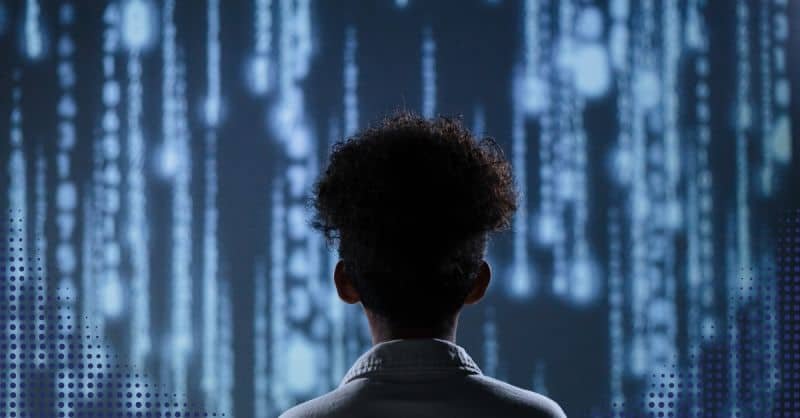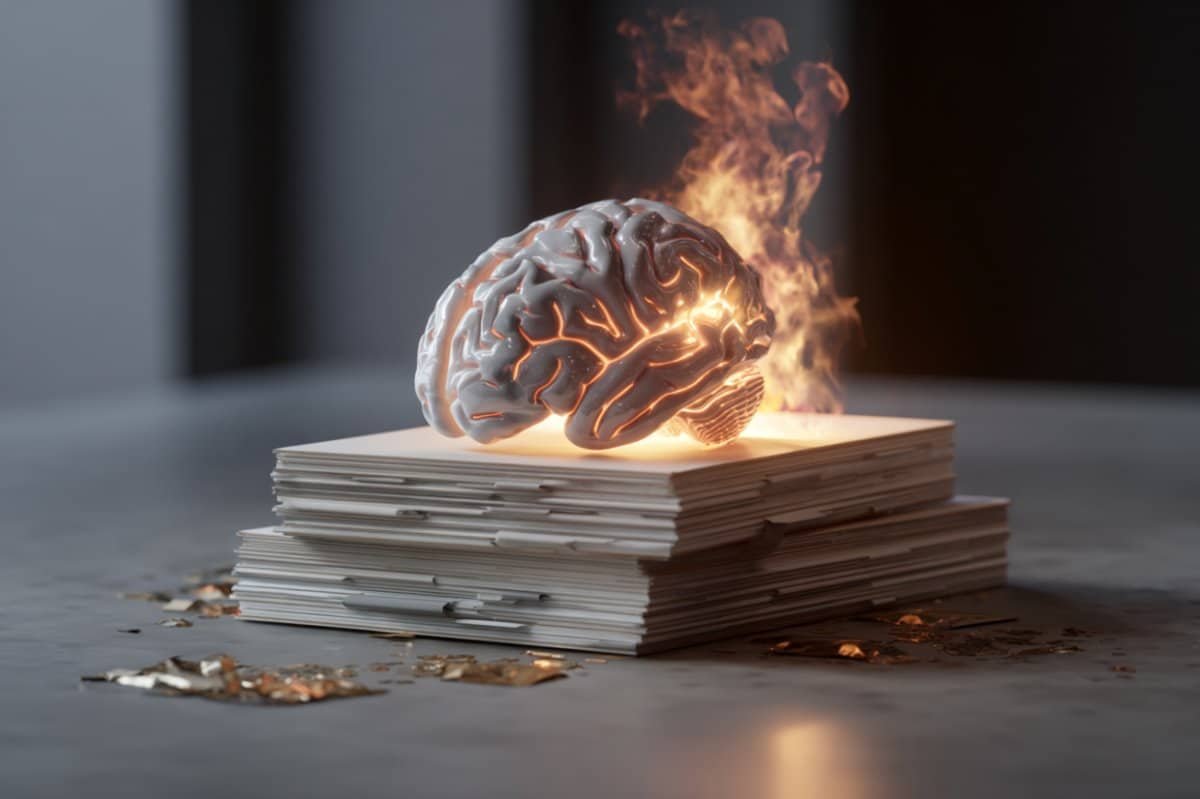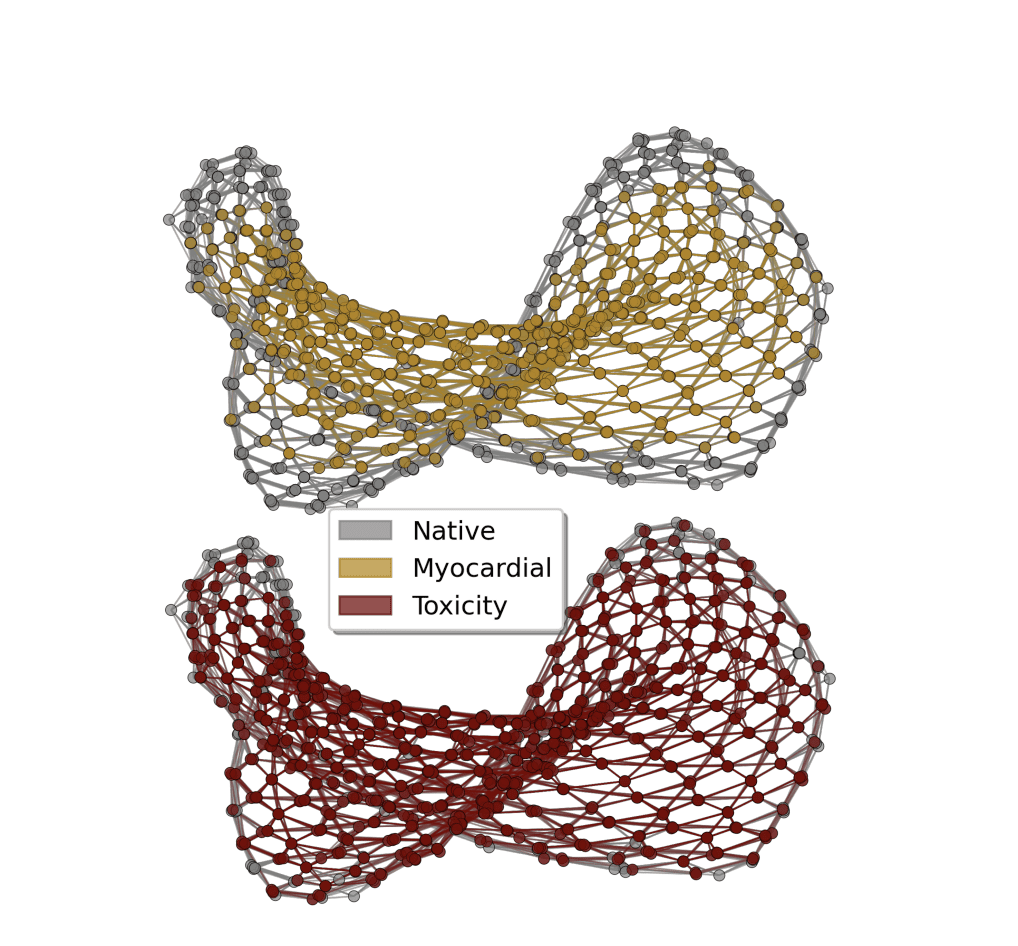New York City, NY, Aug. 30, 2025 (GLOBE NEWSWIRE) — Introduction – What is Trade Vector AI
Trade Vector AI is a next-generation artificial intelligence platform designed to bring automation, speed, and accuracy to digital asset trading. Built on advanced algorithms and predictive modeling, the system processes large volumes of financial data in real time to identify trade opportunities with precision. Unlike traditional manual methods, Trade Vector AI leverages machine learning, neural networks, and adaptive logic to continuously refine its execution strategies.
The platform is positioned as a comprehensive trading environment where automation meets transparency. By integrating AI into every stage of the trading cycle—from market analysis to order placement—Trade Vector AI aims to reduce human error while maintaining a consistent flow of decisions based on verified data. Its architecture is designed for scalability, meaning it can accommodate both individual traders and institutional participants who require high-frequency execution.
In addition to real-time market scanning, the platform incorporates a robust risk-management engine. This ensures that automated decisions remain within set parameters, balancing opportunity with protection. With its secure design, Trade Vector AI establishes itself as more than just an automation tool—it functions as an intelligent trading partner capable of adapting to rapidly changing market conditions.
As digital markets evolve in 2025, Trade Vector AI positions itself at the forefront of financial technology. Its structured approach combines cutting-edge computing power, encrypted infrastructure, and seamless account integration. By uniting these components, Trade Vector AI presents a reliable, AI-driven ecosystem for those seeking precision-based automation in global markets.
Trade Vector AI Features
The core strength of Trade Vector AI lies in its integrated suite of features tailored to maximize efficiency in digital trading. At the foundation are AI-driven trading algorithms that process historical data, live order books, and market signals to identify patterns and execute decisions in fractions of a second. This enables continuous operation around the clock, capturing opportunities across global exchanges without manual intervention.
A key feature is its automated execution engine. Once trading parameters are defined, the platform executes transactions in real time, maintaining speed and minimizing latency. To complement automation, users can access a demo trading environment, which allows them to practice strategies and become familiar with the system before transitioning to live markets.
Trade Vector AI also integrates risk-management controls, enabling users to define stop-loss levels, trade size limits, and exposure thresholds. This ensures that trading activity remains aligned with individual preferences while maintaining capital protection.
The interface itself is designed for intuitive navigation, making it suitable for newcomers while still offering advanced configurations for professionals. Additionally, the system offers 24/7 operational capacity, ensuring uninterrupted monitoring and execution.
Behind these features is a robust data infrastructure that aggregates information from multiple sources simultaneously. This includes price feeds, volume metrics, and volatility indicators, all processed through machine learning models that continuously refine predictive accuracy.
By combining automation, demo access, risk controls, and continuous learning models, Trade Vector AI establishes itself as a comprehensive platform. Its feature set is designed not only for speed and accuracy but also for accessibility and security, offering a balanced framework for AI-driven trading.
Visit the Official Website Here For More Information
Trade Vector AI – Security Measures, and Factual Performance Data
Security and performance are cornerstones of the Trade Vector AI ecosystem. To protect user accounts and transactions, the platform employs SSL encryption, ensuring all communications and financial data remain secure. Additionally, integration with regulated broker partners strengthens the security framework, offering a layer of compliance oversight across trading activities.
From a technical standpoint, the system operates on high-availability servers that maintain uptime reliability. This infrastructure allows the AI engine to continuously monitor market conditions without interruption. With built-in redundancy and advanced firewall protection, Trade Vector AI minimizes downtime risks and cyber vulnerabilities.
On performance metrics, Trade Vector AI highlights factual execution speed and consistency. Internal tests indicate that the AI models are capable of analyzing multiple market conditions in milliseconds, identifying patterns and deploying orders faster than manual operations. The adaptive learning framework refines these models based on historical and real-time results, improving efficiency over time.
Transparency is built into the reporting tools, which provide real-time dashboards displaying executed trades, active positions, and profit/loss summaries. This ensures that users can validate system performance independently. Additionally, demo accounts are offered with simulated data, giving a transparent view of functionality before engaging in live trading.
Taken together, Trade Vector AI’s security protocols, regulatory partnerships, and verifiable performance tools create an infrastructure centered on trust. By combining encrypted communication, compliance-driven broker integration, and adaptive AI models, the platform presents a secure, factual, and technologically advanced foundation for automated trading.
Why Choose Trade Vector AI? Kuwait Consumer Report Released Here
Trade Vector AI Account Setup Process – Step by Step
The Trade Vector AI onboarding process is structured for clarity and efficiency. Each stage has been designed to help new users transition into automated trading smoothly, while meeting regulatory and security requirements.
Step 1 – Registration
Visit the official Trade Vector AI website and complete the registration form by entering your full name, email address, and phone number. Once submitted, a confirmation link is sent to activate the account.
Step 2 – Account Verification
For compliance and security, identity verification is required. Upload government-issued identification and proof of address to complete KYC (Know Your Customer) protocols.
Step 3 – Initial Deposit
To begin trading, an initial deposit is required. The minimum deposit requirement is $250, which serves as trading capital and unlocks live account access. Deposits can be made via credit/debit card, bank transfer, or other supported payment gateways.
Step 4 – Demo Account Access
Before live trading, users can explore the demo account, which mirrors real-market conditions without financial risk. This allows familiarization with the dashboard and settings.
Step 5 – Live Trading Configuration
Once ready, users set their trading preferences, including risk levels, trade size, and automation settings. The platform’s AI system takes over execution in real time.
Step 6 – Withdrawals
Profits and remaining balances can be withdrawn through the same methods used for deposits. Withdrawals are processed within a standard timeframe, subject to verification.
This structured account setup ensures accessibility, transparency, and compliance, while providing new users with a guided start into AI-driven trading.
Why Choose Trade Vector AI? Kuwait & Canada Consumer Report Released Here
How Does Trade Vector AI Works?
Trade Vector AI operates through an integrated cycle of data gathering, algorithmic processing, and automated execution. At its core, the platform relies on machine learning and predictive analytics to interpret complex market environments.
The process begins with data collection. The AI continuously scans global markets, gathering price movements, order book activity, and volatility metrics. This data is then processed through models trained on historical and real-time conditions.
Next, the analysis stage applies pattern recognition to identify trade opportunities. By referencing both past trends and present signals, the system can anticipate potential market moves. Unlike static strategies, Trade Vector AI uses adaptive models that adjust as new data emerges, ensuring relevance even in dynamic conditions.
Following analysis, the execution engine deploys trades according to predefined parameters set by the user. These parameters can include stop-loss levels, trade size, and exposure limits. By combining automation with customizable controls, the system balances efficiency with risk management.
Throughout this cycle, Trade Vector AI provides real-time reporting dashboards. These display open positions, recent trades, and performance metrics, giving transparency into how the AI operates.
In essence, Trade Vector AI functions as a self-sustaining system: collecting data, analyzing opportunities, and executing trades without manual intervention. Its adaptive learning ensures continuous refinement, making it a dynamic, AI-driven trading platform suited to modern market conditions.
From Beginner to Pro: Guided Onboarding, 24/7 Support, and Intuitive Design
Trade Vector AI is structured to accommodate traders of all levels through a combination of guided onboarding and continuous support. The platform introduces users with a step-by-step walkthrough, ensuring that account creation, verification, and configuration are handled smoothly.
For beginners, the inclusion of a demo trading account is essential. It provides a risk-free environment where strategies can be tested while users become familiar with the dashboard. The intuitive interface minimizes technical complexity, making it possible to engage with automated trading without prior experience.
Beyond onboarding, 24/7 support is available through multiple channels, including live chat and email. This ensures that any technical or operational queries are addressed in real time, regardless of location or time zone.
Professional users benefit from advanced configuration tools that allow greater control over trade parameters, risk exposure, and execution preferences. Despite this sophistication, the platform retains its user-friendly structure, allowing both beginners and professionals to navigate efficiently.
The design philosophy emphasizes accessibility, adaptability, and support. By combining guided onboarding, round-the-clock assistance, and intuitive controls, Trade Vector AI offers a pathway that adapts to the needs of all user levels. This structure enhances usability while reinforcing its position as a reliable AI-driven trading solution.
More Information on Trade Vector AI Can Be Found On The Official Website Here
Regulated, Transparent, and Secure: Why Trade Vector AI Earns Trust in 2025
Trust in digital trading platforms is anchored in regulation, transparency, and robust security protocols. Trade Vector AI integrates these pillars into its operational framework, positioning itself as a trusted environment in 2025.
From a regulatory standpoint, Trade Vector AI partners exclusively with licensed brokers, ensuring that trading activities align with established compliance standards. This collaboration introduces oversight mechanisms that help safeguard both deposits and executed trades.
Transparency is reinforced through real-time reporting tools. Users have immediate access to dashboards displaying trade history, open positions, and profit/loss metrics. This allows for independent validation of system performance and fosters accountability.
In terms of security, the platform incorporates end-to-end SSL encryption, secure payment gateways, and firewall protection. Together, these measures create a safeguarded ecosystem against unauthorized access and cyber risks.
Furthermore, by offering demo access alongside live trading, the platform emphasizes openness, giving users an opportunity to experience its operations first and before committing capital.
In 2025, where digital security and regulatory alignment remain critical, Trade Vector AI demonstrates adherence to these principles. By combining compliance partnerships, transparent reporting, and encrypted infrastructure, it presents itself as a secure, trustworthy, and transparent trading environment.
Trade Vector AI – Cost, Minimum Deposit, and Profit
The financial structure of Trade Vector AI is designed for accessibility while maintaining clear transparency. The minimum deposit requirement is $250, which serves as initial trading capital. This amount grants users access to the live trading environment after completing registration and verification.
There are no additional registration or account maintenance fees. Capital deposited is fully allocated toward trading activities, ensuring that funds are directed to market participation rather than platform overhead.
Profit generation is based entirely on the performance of AI-driven strategies in real market conditions. While the system provides predictive automation and adaptive execution, profitability depends on market volatility and trading configurations set by the user. The platform does not guarantee fixed returns; instead, it provides the tools, data analysis, and execution speed necessary for optimized outcomes.
Withdrawals are supported through the same methods as deposits, offering consistency and security. Standard processing times apply, subject to verification for compliance.
In summary, the financial entry point is structured at an accessible level, with transparent allocation of deposits toward trading. Profit potential is determined by market conditions and system performance, offering a clear, data-driven approach without hidden costs or unclear commitments.
Countries Where Trade Vector AI Is Legal
Trade Vector AI operates within a broad international framework, ensuring compliance with jurisdictions where automated trading is permitted. The platform is accessible across Europe, Asia, Africa, and Latin America, subject to local financial regulations.
In the European Union, Trade Vector AI functions in alignment with regulatory requirements, working in cooperation with licensed brokers. Similarly, in regions across Asia and Latin America, the platform’s operations adhere to local guidelines, ensuring that trading activities meet compliance obligations.
Access in North America is determined by specific state and federal rules. While availability may vary, the platform emphasizes regulatory alignment and transparency wherever it is active.
By maintaining partnerships with regulated entities, Trade Vector AI ensures lawful operation across multiple jurisdictions. This approach expands accessibility while safeguarding compliance, reinforcing its position as a global trading solution.
Visit the Official Website Here For More Information
Trade Vector AI Supported Assets
Trade Vector AI offers a wide range of supported assets, enabling diversified trading strategies across global markets. Central to its portfolio are cryptocurrencies, including leading tokens such as Bitcoin, Ethereum, and other high-liquidity digital assets.
Beyond crypto, the platform also integrates forex pairs, covering both major and minor currencies. This inclusion allows users to participate in highly liquid markets, taking advantage of global currency fluctuations.
In addition, Trade Vector AI provides access to commodities and indices, further broadening its scope. By supporting multiple asset classes, the platform ensures that users can diversify portfolios, manage risk, and access opportunities across markets.
This multi-asset framework is supported by AI models that adapt strategies according to asset-specific behavior. Whether operating in crypto, forex, or commodities, the system applies tailored predictive logic, ensuring relevance and precision in execution.
By integrating multiple asset categories under one environment, Trade Vector AI positions itself as a versatile, AI-powered platform capable of supporting diverse trading objectives.
Trade Vector AI – Final Verdict
Trade Vector AI stands as a comprehensive artificial intelligence trading platform, distinguished by its automation, transparency, and security framework. Its architecture is built on adaptive machine learning models that process market data in real time, enabling fast and precise execution.
The system incorporates essential components: demo access, risk-management controls, SSL-encrypted security, licensed broker partnerships, and multi-asset support. Together, these create an ecosystem that balances accessibility with advanced technology.
With a minimum entry requirement of €250, Trade Vector AI opens the door to live trading while offering risk-free practice through its demo environment. Its design accommodates all user levels, from beginners using guided onboarding to professionals seeking high-frequency automation.
In 2025, as trading systems continue to evolve, Trade Vector AI presents itself as a secure, regulated, and adaptive solution. By uniting predictive analytics, global market access, and a transparent operational model, it delivers a forward-looking platform for AI-driven trading.
Visit Here to Register on the Trade Vector AI – Select Your Country Here!!!
Contact:-
Trade Vector AI
485 Bd de la Gappe, Gatineau, QC J8T 5T9, Canada
Phone Support: Trade Vector AI Canada: +1 (437) 920-9751
Trading Assistance: +1 (437) 169-3417
Email: info@trade-vector-ai-app.net
Website: https://trade-vector-ai-app.net/
General Disclaimer:
The content provided in this article is for informational and educational purposes only. It does not constitute financial, legal, or professional advice. Readers are advised to consult a certified financial advisor, licensed loan officer, or legal professional before making any financial decisions. The information presented may not apply to every individual circumstance and is not intended to substitute professional judgment or regulatory guidance. The information provided on this website does not constitute investment advice, financial advice, trading advice, or any other sort of advice and you should not treat any of the website’s content as such. We does not recommend that any cryptocurrency should be bought, sold, or held by you. Do conduct your own due diligence and consult your financial advisor before making any investment decisions.
Trading Disclaimer:
Trading cryptocurrencies carries a high level of risk, and may not be suitable for all investors. Before deciding to trade cryptocurrency you should carefully consider your investment objectives, level of experience, and risk appetite. The possibility exists that you could sustain a loss of some or all of your initial investment and therefore you should not invest money that you cannot afford to lose. You should be aware of all the risks associated with cryptocurrency trading, and seek advice from an independent financial advisor. ICO’s, IEO’s, STO’s and any other form of offering will not guarantee a return on your investment.
HIGH RISK WARNING: Dealing or Trading FX, CFDs and Cryptocurrencies is highly speculative, carries a level of non-negligible risk and may not be suitable for all investors. You may lose some or all of your invested capital, therefore you should not speculate with capital that you cannot afford to lose. Please refer to the risk disclosure below. Trade Vector AI does not gain or lose profits based on your activity and operates as a services company. Trade Vector AI is not a financial services firm and is not eligible of providing financial advice. Therefore, Trade Vector AI shall not be liable for any losses occurred via or in relation to this informational website.
SITE RISK DISCLOSURE: Trade Vector AI does not accept any liability for loss or damage as a result of reliance on the information contained within this website; this includes education material, price quotes and charts, and analysis. Please be aware of and seek professional advice for the risks associated with trading the financial markets; never invest more money than you can risk losing. The risks involved in FX, CFDs and Cryptocurrencies may not be suitable for all investors. Trade Vector AI doesn”t retain responsibility for any trading losses you might face as a result of using or inferring from the data hosted on this site.
LEGAL RESTRICTIONS: Without limiting the above mentioned provisions, you understand that laws regarding financial activities vary throughout the world, and it is your responsibility to make sure you properly comply with any law, regulation or guideline in your country of residence regarding the use of the Site. To avoid any doubt, the ability to access our Site does not necessarily mean that our Services and/or your activities through the Site are legal under the laws, regulations or directives relevant to your country of residence. It is against the law to solicit US individuals to buy and sell commodity options, even if they are called “prediction” contracts, unless they are listed for trading and traded on a CFTC-registered exchange unless legally exempt. The Financial Conduct Authority has issued a policy statement PS20/10, which prohibits the sale, promotion, and distribution of CFD on Crypto assets. It prohibits the dissemination of marketing materials relating to distribution of CFDs and other financial products based on
Cryptocurrencies that addressed to Austria, Kuwait, UK/AU residents. The provision of trading services involving any MiFID II financial instruments is prohibited in the EU, unless when authorized/licensed by the applicable authorities and/or regulator(s). Please note that we may receive advertising fees for users opted to open an account with our partner advertisers via advertisers websites. We have placed cookies on your computer to help improve your experience when visiting this website. You can change cookie settings on your computer at any time. Use of this website indicates your acceptance of this website. Please be advised that the names depicted on our website, including but not limited to Trade Vector AI, are strictly for marketing and illustrative purposes. These names do not represent or imply the existence of specific entities, service providers, or any real-life individuals. Furthermore, the pictures and/or videos presented on our website are purely promotional in nature and feature professional actors. These actors are not actual users, clients, or traders, and their depictions should not be interpreted as endorsements or representations of real-life experiences. All content is intended solely for illustrative purposes and should not be construed as factual or as forming any legally binding relationship
RISKS ASSOCIATED WITH FUTURES TRADING
Futures transactions involve high risk. The amount of the initial margin is low compared to the value of the futures contract, so that transactions are “leveraged” or “geared”. A relatively small market movement has a proportionately larger impact on the funds that you have deposited or have to pay: this can work both for you and against you. You may experience the total loss of the initial margin funds as well as any additional funds deposited in the system. If the market develops in a way that is contrary to your position or if margins are increased, you may be asked to pay significant additional funds at short notice to maintain your position. In this case it may also happen that your broker account is in the red and you thus have to make payments beyond the initial investment.
RISKS ASSOCIATED WITH ELECTRONIC TRADING
Before you begin carrying out transactions with an electronic system, you should carefully review the rules and provisions of the stock exchange offering the system, or of the financial instruments listed that you intend to trade, as well as your broker’s conditions. Online trading has inherent risks due to system responses/reaction times and access times that may vary due to market conditions, system performance and other factors, and on which you have no influence. You should be aware of these additional risks in electronic trading before you carry out investment transactions.
Accuracy Disclaimer:
All information included in this article is presented in good faith and believed to be accurate at the time of writing. However, no representations or warranties are made regarding the completeness, accuracy, reliability, or timeliness of any information presented. Any reliance placed on such information is strictly at the reader’s own risk. The publisher does not accept responsibility for typographical errors, outdated information, or changes to products, terms, or policies after publication.
Regulatory and Jurisdictional Disclaimer:
Lending laws vary by jurisdiction, and not all services described in this article may be available in every state or region. It is the responsibility of the reader to understand and comply with local laws and regulations. The platforms mentioned are independently operated and are not controlled or endorsed by the publisher.
Third-Party Liability Waiver:
The publisher, its writers, editors, affiliates, and syndication partners shall not be held liable for any direct or indirect loss, damages, or legal claims arising from the use of this content or from reliance on any third-party services, platforms, or products mentioned herein. All loan agreements, terms, and disputes are strictly between the borrower and the lender or service provider.
Syndication Partner Use:
This content may be republished or syndicated by authorized partners under existing licensing or distribution arrangements. All syndication partners are free from liability regarding the editorial stance, financial suggestions, or any user outcome resulting from the reading or application of this content.











































